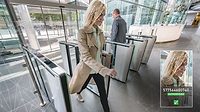Planning your organization’s return to work? Here’s what you should keep in mind.

There’s been a global shift in workplace policy in the corporate world. The default of day-to-day workplace for employees in headquarter locations has been reimagined as flexibility has become essential for anyone navigating the past year and a half.
Employees are now demanding their organizations the flexibility and comfort they’ve become so accustomed since the onset of the pandemic. In fact, a study commissioned by Bloomberg found that 39% of respondents would consider leaving their jobs if their organizations were not flexible about working from home.
With a long list of companies such as Spotify, Salesforce, PepsiCo, Amazon, and Facebook announcing plans to switch to remote work or take on a hybrid model, more and more companies are being forced to rethink its return-to-office plans and adopt more flexible work models.
William Plante, Director, Consulting Services and Strategic Development, Enterprise Security Risk Group
ADT Commercial, says, “Many organizations are changing their viewpoints regarding workplace security as the landscape has drastically changed amidst the COVID-19 crisis. Corporate security planning is being extended into non-traditional areas, including the home as more remote and work-from-home employees become the norm.”
Plante, along with many other security leaders, predict that the “new normal” workplace will be with us for many years, with remote and work-from-home, and hybrid workers becoming a greater percentage of the professional population. To keep up with the new world of work, security programs, including situational awareness and support capabilities, will need to factor in this new workplace dynamic, Plante explains.
“For example, many security executives are grappling with workplace duty of care, usually reserved for a company’s facilities, as now applying to work-from-home employees. Similarly, policies relating to occupational safety and health may need to be re-examined and updated for those employees who work remotely,” he says.
Security teams, in particular, will need to rely on holistic security solutions to not only meet new health and safety demands in the office, but also the employee’s home, Palte says. A few technologies security can implement to facilitate a hybrid workplace, or return to the office, he suggests, include:
- Contact tracing systems and programs: Contact tracing has become a key component of organizations’ pandemic response. Most importantly, security managers can leverage this technology to monitor employee interactions and identify which employees have the highest risk of exposure. Contact tracing can help streamline this lengthy process, allowing security teams to limit spread of COVID-19 (and any virus), minimize exposure and the amount of employees who have to quarantine, and ultimately protect employees and create a healthy and resilient workplace.
- Elevated skin temperature solutions and kiosks: Facilities organizations are working with security to redefine access control to adopt a frictionless verses touchless experience, while adding COVID-19 related technologies, such as elevated skin temperature solutions and kiosks, to the program, Palte says. When evaluating thermal cameras, thermal imaging solutions, infrared cameras and elevated body temperature monitoring solutions, as part of your overall security program, consider the following fundamental questions: is the system FDA-cleared? Does the system meet FDA accuracy requirements? What kind of warranty programs, training and technical support are offered by the manufacturer? Does the application present any employee or consumer privacy issues? And, is a secondary screening process required?
- Expand security awareness programs and reporting capabilities that include remote and work-from-home employees, as well as the technology to support them, including mobile and wearable technologies. Clearly articulate the importance of consistently communicating new policies and procedures which support the safety and health of all individuals. Leadership should brief all employees of updated health and safety policies and guidelines on a regular basis, including entry/egress practices with a comprehensive COVID-19 response training program, either online or in person, that should be required prior to returning to the office space. Provide welcome back kits to assist employees with their transition back to the workplace. Each welcome back kit might should include a printed FAQ guide about updated protocols for social distancing, respiratory etiquette, and other new workspace norms.
- Because many companies have accelerated their digital transformation initiatives, certain physical security technologies should be up for review and transformation. These include AI, IoT and more building management integration, and emerging technologies in physical security applications, such as robotics and drones. A multi-country survey of organizations running video monitoring systems, for instance, found that U.S. organizations are avidly repurposing their existing video monitoring systems to support the ‘COVID Safe’ return to offices and workplaces across North America. Facilities management, operations or security managers were leveraging their video monitoring systems to help manage social distancing requirements, to help provide temperature level checks, to trace all people movements and monitor occupancy levels and people density levels in breakout areas, and to help deploy facial recognition analytics into entrance area cameras to enable contactless access control. Indeed, the pandemic has led organizations to use their current physical security technologies to transform and support the creation of COVID-19 safe workplaces for their staff.
After carefully considering new health and safety demands, evaluate if your organization and facilities are ready to reopen by also taking into consideration the following:
- New crisis management and leadership responsibilities,
- New policy and guidelines on pre-arrival check-in and visitor management,
- Multiple control levels for cleaning and decontamination during and after work hours.
- CDC guidance regarding elevators and escalators, masks, and hand sanitizer stations.
Looking for a reprint of this article?
From high-res PDFs to custom plaques, order your copy today!








